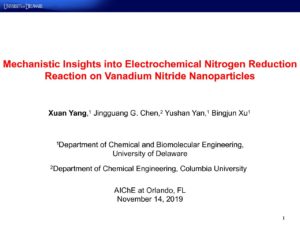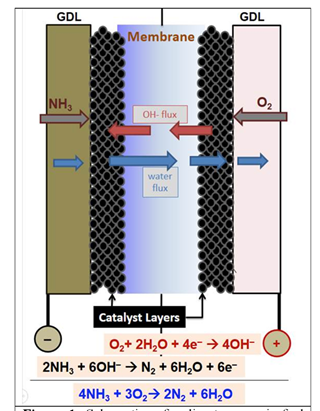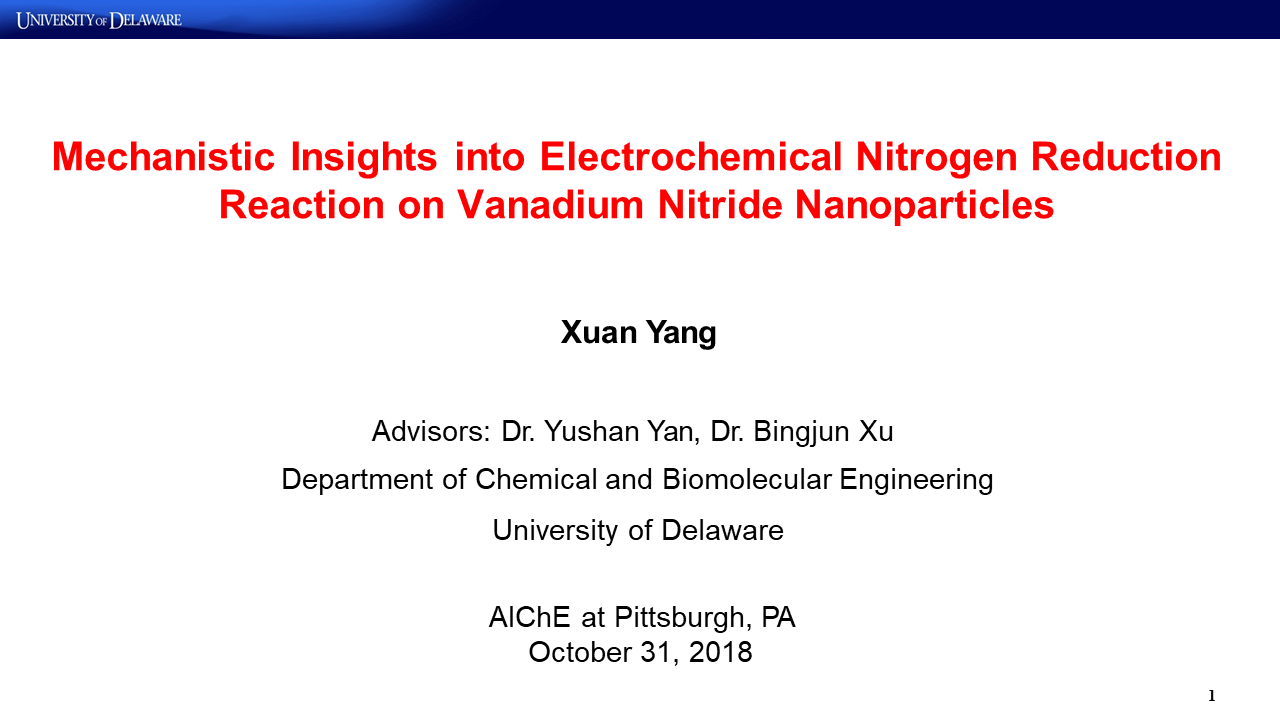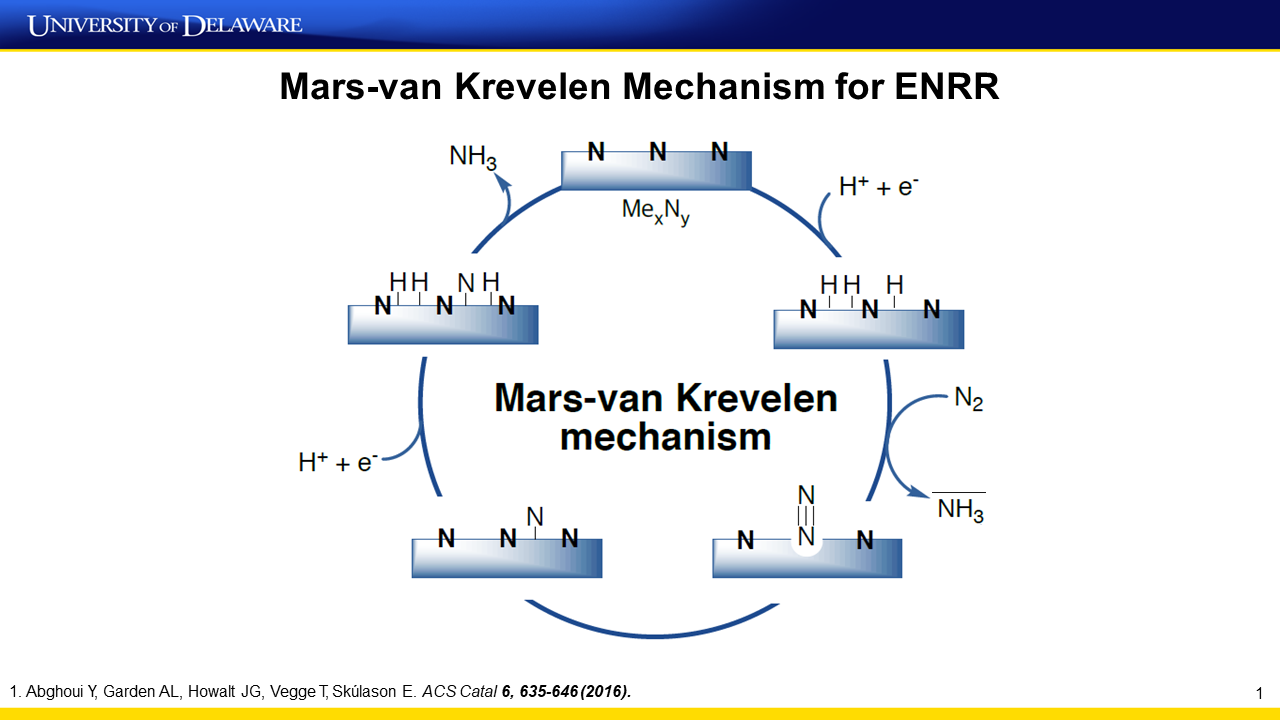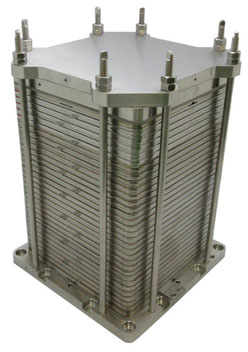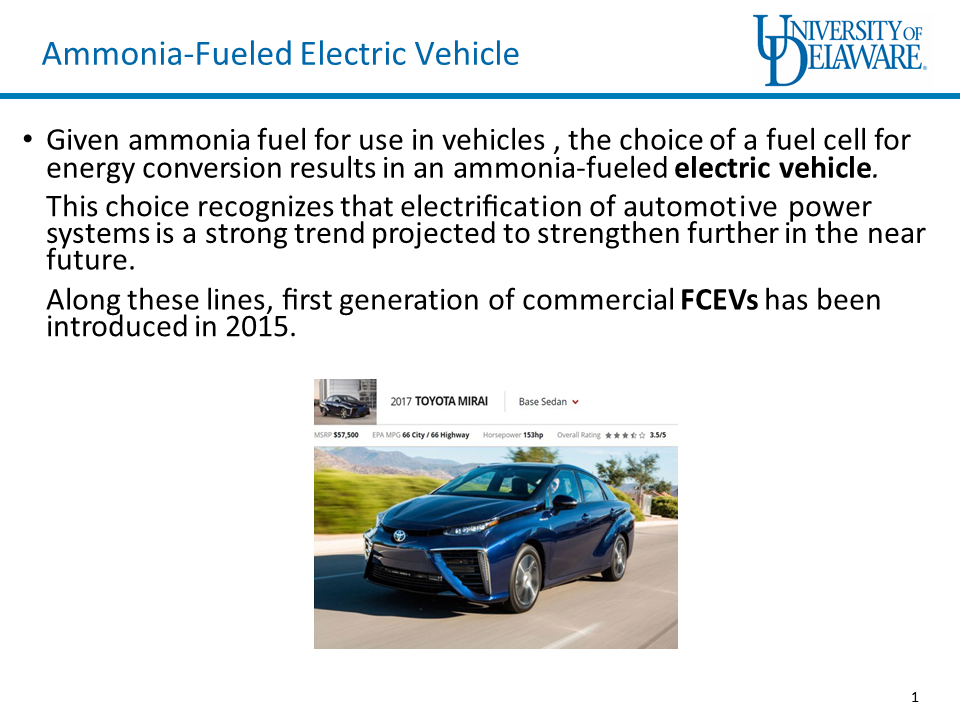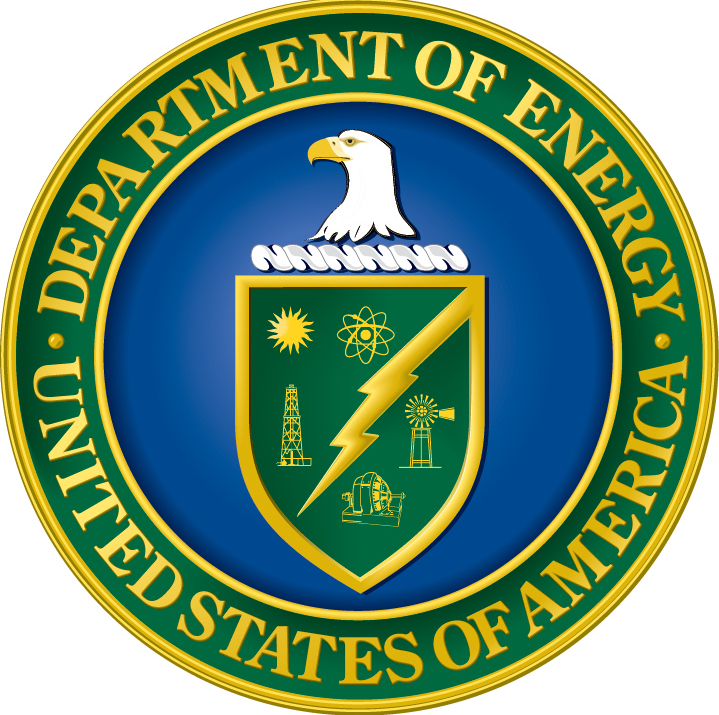Content Related to University of Delaware
Presentation
Mechanistic Insights into Electrochemical Nitrogen Reduction Reaction on Vanadium Nitride Nanoparticles
Renewable production of ammonia, a building block for most fertilizers, via the electrochemical nitrogen reduction reaction (ENRR) is desirable; however, a selective electrocatalyst is lacking. Here we show that vanadium nitride (VN) nanoparticles are active, selective, and stable ENRR catalysts. ENRR with 15N2 as the feed produces both 14NH3 and 15NH3, which indicates that the reaction follows a Mars–van Krevelen mechanism. Ex situ and operando characterizations indicate that VN0.7O0.45 is the active phase for ENRR and the conversion of VN0.7O0.45 to the VN phase leads to catalyst deactivation. Quantitative isotopic labeling results identify the amounts of two different types of…
Article
The Case for Giving Direct Ammonia Fuels Cells a Shot
Stephen H. Crolius August 22, 2019
The Center for Catalytic Science and Technology (CCST) at the University of Delaware has made new strides in the development of a direct ammonia fuel cell (DAFC) suitable for use in transportation applications. The progress is reported in “An Efficient Direct Ammonia Fuel Cell for Affordable Carbon-Neutral Transportation,” a paper published last month by Yun Zhao and six coauthors in the journal Joule. The paper gives an impressive account of CCST’s technical advances; and it makes a distinctly compelling case for the relevance of CCST’s work on DAFCs. In the latter regard, the authors find that ammonia has the “lowest source-to-tank energy cost by a significant margin” relative to other fuels that can be derived from renewably generated electricity. It is in society’s interest, they strongly imply, to give DAFC technology a chance to compete with hydrogen-based fuel cells in automotive applications.
Article
Literature review: Electrochemical Ammonia Synthesis and Ammonia Fuel Cells
Trevor Brown April 16, 2019
The journal Advanced Materials recently published an article that reviews electrochemical ammonia technologies for both synthesis and power generation. In addition to presenting a range of technologies under development, the authors, based at the University of Delaware, present "perspectives in the technical challenges and possible remedies."
Article
More Progress for Automotive-Oriented Direct Ammonia Fuel Cells
Stephen H. Crolius January 03, 2019
Shimshon Gottesfeld’s paper The Direct Ammonia Fuel Cell and a Common Pattern of Electrocatalytic Processes leads with a big number: “A record power density of 450 mW/cm2 has been demonstrated for a direct ammonia fuel cell [DAFC] using an alkaline membrane electrolyte.” We know it’s big because it’s 80% higher than the 250 mW/cm2 that Gottesfeld’s team had achieved in the fall of 2017 and that Gottesfeld, Adjunct Professor of Chemical Engineering at the University of Delaware, reported at the November 2017 NH3 Energy+ Topical Conference.
Presentation
Electrochemical Nitrogen Reduction Reaction on Transition Metal Nitride Nanoparticles in Proton Exchange Membrane Electrolyzers
Transition metal nitride nanoparticles are synthesized and utilized as catalysts for electrochemical nitrogen reduction reaction (ENRR) to produce ammonia in a proton exchange membrane electrolyzer (PEMEL). The catalysts show an average ENRR rate and Faradaic efficiency (FE) of 3.3 × 10−10 mol s−1 cm−2 (6.6 × 10−10 mol s−1 mg−1) and 5.95% at −0.1 V within 1 h, respectively. Both the ENRR rate and FE are approximately two orders of magnitude higher than those of noble metal catalysts. Time-dependent results suggest that the catalytic activity of transition metal nitride nanoparticles is stable at −0.1 V, with the catalytic activity decreasing…
Presentation
Electrochemical Synthesis of Ammonia Using Metal Nitride Catalsyts
With the development of the Haber process and the subsequent work done by Bosch, ammonia production become an industrially and economically viable way to fix nitrogen. This helped increase the global population and estimates put it at about 40% of the global population’s food comes from ammonia made by the Haber-Bosch process[1]. However, the Haber-Bosch process is an energy intensive process requiring high pressure (15-30 MPa) and relatively high temperature (430 °C – 480 °C) and is highly centralized with only about 13 companies and about 29 plants[2,3]. Renewable energy resources offer a possible alternative way to fix nitrogen at…
Article
Ammonia for Fuel Cells: AFC, SOFC, and PEM
Trevor Brown October 25, 2018
In the last 12 months ... IHI Corporation tested its 1 kW ammonia-fueled solid oxide fuel cell (SOFC) in Japan; Project Alkammonia concluded its work on cracked-ammonia-fed alkaline fuel cells (AFC) in the EU; the University of Delaware's project for low-temperature direct ammonia fuel cells (DAFC) continues with funding from the US Department of Energy's ARPA-E; and, in Israel, GenCell launched its commercial 4 kW ammonia-fed AFC with field demonstrations at up to 800 locations across Kenya.
Article
Progress for Low-Temperature Direct Ammonia Fuel Cells
Stephen H. Crolius December 14, 2017
Speaking at the NH3 Energy+ Topical Conference last month, University of Delaware Adjunct Professor Shimshon Gottesfeld reported on progress made by the university’s direct ammonia fuel cell (DAFC) project. Evidently, the UDel team is now a big step closer to its goal of establishing the DAFC as a viable automotive power plant.
Presentation
Direct Ammonia Fuel Cell Utilizing an OH- Ion Conducting Membrane Electrolyte
We describe the techno-economic background and the R&D work scheduled for the ARPA-E project “Direct Ammonia Fuel Cells (DAFCs) for Transportation Applications,” which is about to start under the REFUEL program. The project is led by Shimshon Gottesfeld & Yushan Yan, University of Delaware, Jia Wang & Radoslav Adzic, Brookhaven National Laboratory, Chulsung Bae, Rensselaer Polytechnic Institute, and Bamdad Bahar, Xergy Inc. The multidisciplinary R&D work scheduled will cover the fields of advanced membrane and electrocatalyst development, MEA development and fabrication, and stack engineering. The latter two activities will be supported by work at POCellTech, with Miles Page as lead.…
Article
US DOE funding research into sustainable ammonia synthesis
Trevor Brown January 27, 2017
The US Department of Energy (DOE) is currently supporting six fundamental research projects that will develop "novel catalysts and mechanisms for nitrogen activation," which it hopes will lead to future sustainable ammonia synthesis technologies. These projects, announced in August 2016 and administered by the Office of Basic Energy Sciences, aim "to investigate some of the outstanding scientific questions in the synthesis of ammonia (NH3) from nitrogen (N2) using processes that do not generate greenhouse gases."
Article
REFUEL Ammonia Use-Side Funding Awards
Stephen H. Crolius December 23, 2016
Six of the projects designated for funding by the ARPA-E REFUEL announcement on December 15 involve technologies on the use side of the ammonia energy space. Three focus on generating hydrogen from ammonia. Two focus on fuel cells that convert ammonia to electricity. One project involves both ammonia synthesis and use.
Presentation
Alkaline membrane fuel cells using ammonia fuel
Alkaline membrane fuel cells using ammonia fuel Shimshon Gottesfeld, Fuel Cell Consulting / University of Delaware
